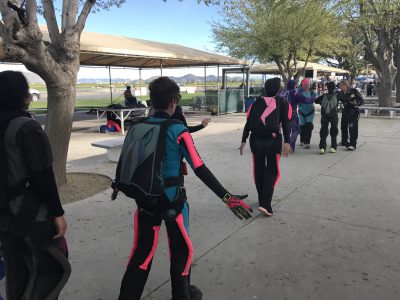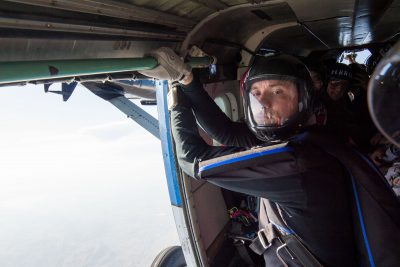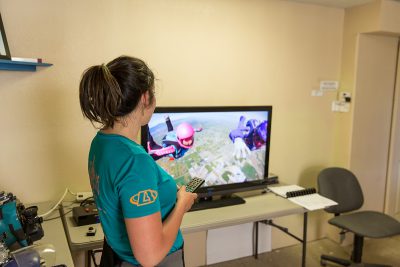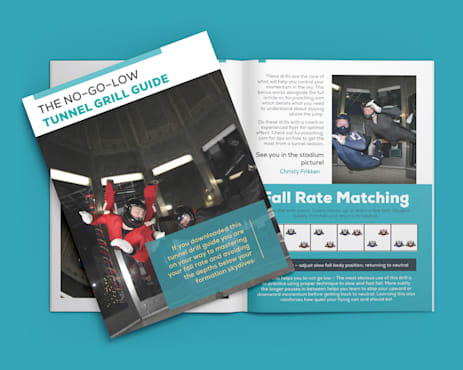Visualizing Basics
Monday, June 7, 2021
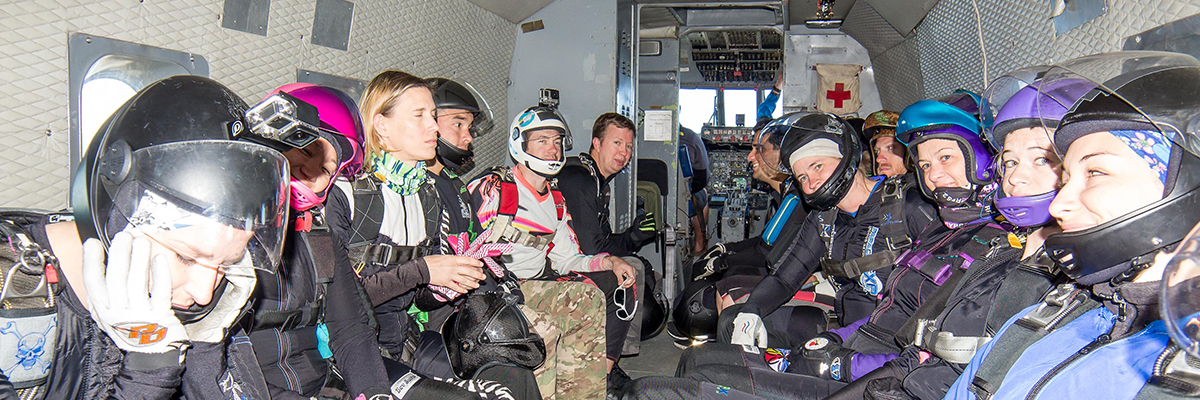
Visualizing is a term that means producing mental imagery. In our case, it means per-rehearsing a skydive before you do it. There is a good chance you have instinctively done this for skydiving or other physical activities in your life without explicit instruction. Of course, if you haven’t done this much, don’t fret. You can learn how! I’ll tell you when to do visualize, what to visualize, and how to do it.
This article focuses on visualizing specific jumps, but you can and should regularly imagine your emergency procedures!
Mental practice
When you visualize a skydive, you are giving yourself mental practice. It is excellent at helping you learn the flow. Visualizing can help reinforce your skydiving discipline and techniques. It can be as good as real practice.
When to visualize
You can visualize any time! But to incorporate it into a regular routine, focus on these areas first.
Part of prep
You should visualize on the ground as part of your prep routine. If you know what the points will be, you can imagine them even before you walk or creep. Training teams often take a moment in their creeping plan to visualize before a final roll through. And of course, you can reinforce what you learned in your prep by pausing to think through the jump before you gear up and get to the plane.
In the plane
The plane is a fantastic place to visualize. You are, after all, not doing much else for those 15 minutes. Make your aircraft visualizing routine consistent. If part of your routine is not working, you can adjust and see the effects.
You don’t have to visualize the whole way to altitude. That kind of focus is uncommon and perhaps overdoing it. A few mental pass-throughs with breaks in between is generally sufficient.
I recommend visualizing early in the plane ride, in the middle, and once more approaching the end. For example, I mentally rehearse until the seatbelts are off, a few times through after a short break, and just before handshake time.
Homework
If you are skydiving with performance goals (competition or big-ways), you should give yourself time to visualize while you are not training. I have seen teams get better between camps because they spent time on visualizing homework. It is as good as training in many ways!
What to visualize
So what should you think about when you visualize? There are lots of options! And you should try them all, and use them all for different types of circumstances.
Actual jump
The whole jump – from exit to opening – is essential to visualize. You can start from climb out, imagine the exit, the hill, and the points you will score. Do this a few times in real-time speed somewhere in your routine. Think of your ideal jump – make the dive great in your head.
Technique or portions
If you are training or doing homework, you may want to focus on a particular part of a jump. This bit could be a block technique, and exit, or a random page. By looking at a shorter piece of your jump, you make corrections and improvements to your daily goals.
Competition or event day
If you are headed to a competition, spend some time visualizing the whole meet. Anticipate the excitement and energy you might feel at the beginning. Think through your team’s prep and jump plan in your head. Consider how you will feel for a good or bad jump, and mentally practice how you plan to reset and refocus in between skydives.
If you want to go all-in, grab a draw, and walk yourself through a whole meet! Make up some competition drama and imagine yourself navigating every obstacle like a champion!
Training day
Every day I train, I take a couple of minutes in the morning to imagine what my perfect day will look like. I think through what I want, my attitude, energy, and focus to be. I ask myself what needs to happen during the day to finish stoked and satisfied about the day.
This short and straightforward exercise puts me in a mindset to create a fantastic training day instead of just having a good day by chance.
How to visualize
The best part about visualizing is that you get to be the director. You can start, stop, slow down, speed up, change the view, pause, rewind, fast forward, or switch slots. Anything you can think of! All of it is excellent stuff, and you should try all kinds of methods. Don’t just stick to what comes naturally; expand your understanding by trying different plans.
On level vs. video view
One of the most frequent questions I get about visualizing is about the perspective. Should you imagine a dive from above, or from your level?
In my experience, people will naturally gravitate to one or the other, but I encourage them to learn and use both styles.
The overhead view shows how the whole team is working together. The on level view is what you experience. Flipping and being able to do both will make you a better skydiver.
However, I would say that most people should work towards on-level being their primary means of processing a jump. If we are treating visualizing as simulated practice, what you see from your perspective is more effective.
Detail
As the director of the movie, you can add tons of detail. Teammate gear or eye colors, the sound of the wind, the temperature outside, and your equipment’s feel are just a few examples. The more vivid you make the picture, the more real the picture feels in your head.
Conversely, I find some value in “fuzzing out” the detail for some run-throughs. By abstracting my brain’s picture, I can focus on a broader range of information and bigger picture movement.
Visual and physical
The first visualizing you do will likely focus on visual images because where you are relative to others is the most critical piece of information on a good jump. This is the reason coaches obsess over who, when, and where you are looking.
As you learn specific physical movements, the physical feeling can enter the picture. Your visualization will come to life by introducing muscle sensations. If you ever see someone moving their hands while they visualize, this is a by-product of that element.
Speed
One of the coolest things about being the controller in the movie is changing the speed at will. A visualized dive can speed up, slow down, or even pause!
Slowing down encourages details and allows you to think about what you are doing at your own pace. It also helps keep the dive feel calm and in control. Conversely, speeding up builds anticipation and energy.
Most groups visualize (and walk) too fast for real-time. A fun exercise is to set up a scorekeeper and push the point button every time you score a point while you visualize a jump. There is a good chance you are thinking things through unrealistically fast!
Positive
When working through your preparation, strive to keep the dive perfect and mistake-free. If you have prepared well, this should be achievable by the time you get into the plane.
However, sometimes mistakes creep into your thoughts at the worst time. This is not a big deal; practice recovering and continue with your jump. If you have a stubborn transition or brainlocky portion, you can spend a little time working that bit in your head before carrying on. It can also be useful in non-training time to practice your ideal response to mistakes.
In the end, though, strive towards multiple error-free run-throughs before your jump. And if that isn’t in the card before the red light flips on, don’t panic. Just double down on the calm and confidence – you can still have a perfect jump!
Visualizing is a fantastic tool for performing your best at any sport. It is a skill that can be learned and improved with practice. Spend time making a consistent routine, and you’ll find yourself able to focus more clearly for longer, and your skydives will be better!
Related articles
Tags: prep
